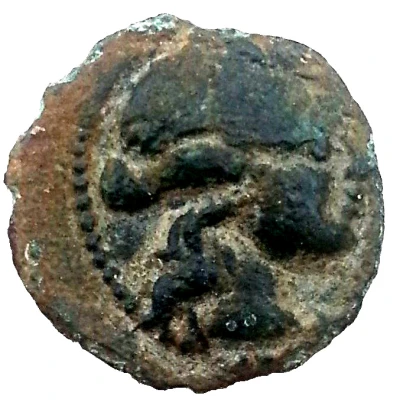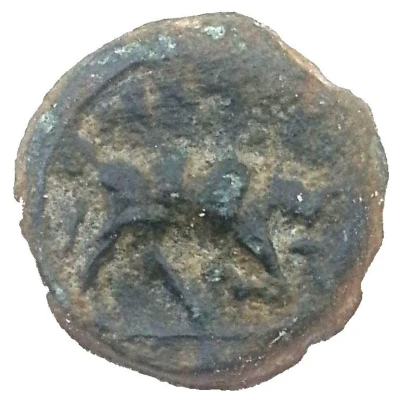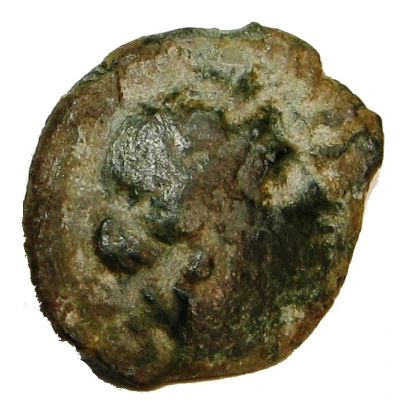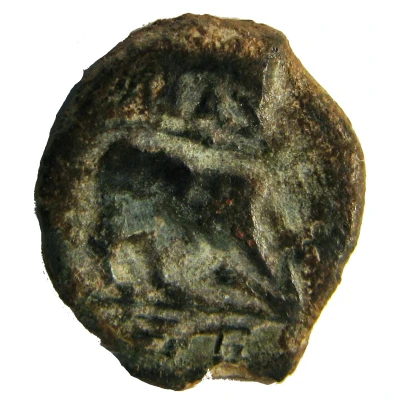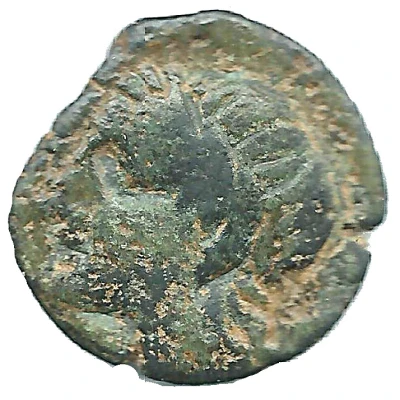
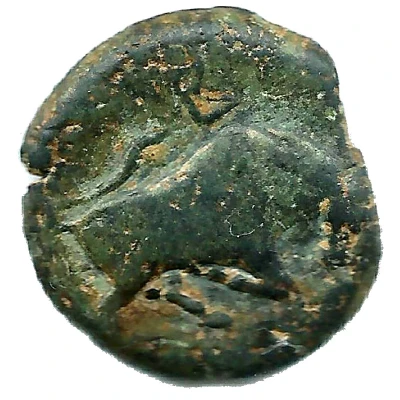

© marcpleche
Hemiobol bull; angle B 130 BC - 121 BC
| Bronze | 1.75 g | 14.2 mm |
| Issuer | Massalia (Gaul) |
|---|---|
| Type | Standard circulation coin |
| Years | 130 BC - 121 BC |
| Value | Hemiobol (1⁄12) |
| Currency | Phocaean Drachm |
| Composition | Bronze |
| Weight | 1.75 g |
| Diameter | 14.2 mm |
| Thickness | 2.2 mm |
| Shape | Round (irregular) |
| Technique | Hammered |
| Orientation | Variable alignment ↺ |
| Demonetized | Yes |
| Updated | 2024-10-10 |
| Numista | N#92545 |
|---|---|
| Rarity index | 94% |
Reverse
Bull butting right under a bull skull, legend below
Script: Greek
Lettering: ΜΑΣΣΑ
Translation: Massalia
Edge
Plain
Interesting fact
The Hemiobol coin was used in ancient Greece and its colonies, including Massalia (modern-day Marseille, France), where this particular coin was minted. The coin's design features a bull on one side and an angle (representing the goddess Hera) on the other. The coin was made of bronze and weighed 1.75 grams. Despite its small size and relatively low value, the Hemiobol was an important coin in ancient Greece, as it was used for everyday transactions and was a symbol of the city's wealth and power.
